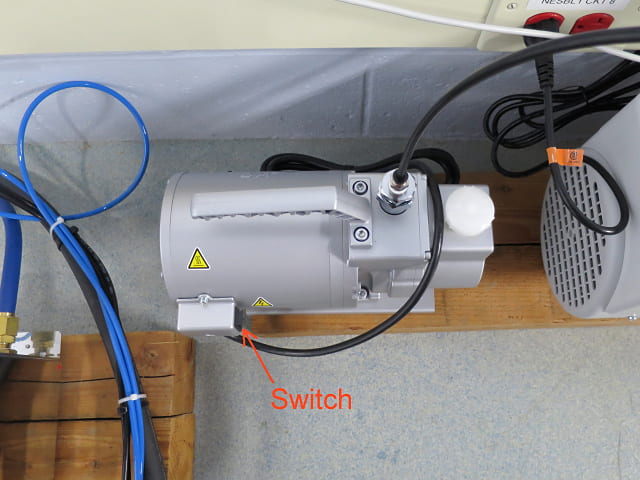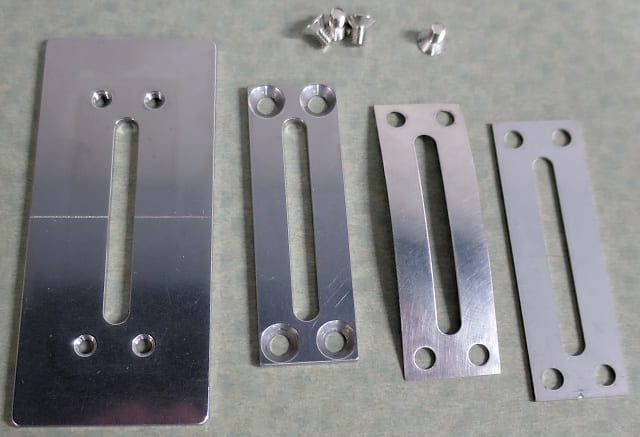Small angle X-ray scattering measurements (SAXS) require a series of special attachments, such as slits, and a vertical sample holder.

- Scattering reference standard. The label on the box says “Rigaku Standard Reference Film RSF-L01 Instrument Sensitivity for X-ray Small Angle Scattering.” It clips into the sample stage (part 6).
- Height-limiting receiving slits (limit X-ray illumination perpendicular to the goniometer plane). Their purpose is to narrow the X-ray beam for smaller samples.
- Sample holder, which clips into the stage (part 6). Sample may be stuck to one or held between two X-ray-transparent films, which are clamped between the metal plates. The instruction manual tells you how.
- Vacuum path, to reduce atmospheric scattering and absorption on the way to the detector. Apparently, air absorbs and scatters more than the vacuum windows on the path ends (very fragile!). Connects to the vacuum hose, shown below.
- SAXS incident slit, labeled SA.
- Stage top, having clips for the SAXS sample holder. This replaces the normal stage top piece.

Vacuum hose for the vacuum path attachment. It pushes into the black plastic fitting on top of the vacuum path housing, part 4, above. Push in the black plastic fitting to release the hose, so it can be pulled out.

Vacuum pump for the vacuum path. Remember that the two vacuum pumps can’t be run from the same circuit at the same time

This is the SAXS sample holder, taken apart. The small plates can clamp plastic films, and such, flat against the big plate. For films, you must use the thick small plate because it has the properly drilled screw holes. The two thinner plates can be used in addition if they make mounting more convenient. In any case, the sample needs to be flat against the big plate. When installed on the stage, the big plate is always on the left in the holder, the smaller plates to the right.
With capillaries, the small plates aren’t used. Instead, silicone grease is used to secure the capillary to the right side of the big plate, with the capillary mounted as closely as possible along the center line of the long aperture. Again, when mounted on the stage, the capillary should be to the right side of the big plate.

0.7 mm capillary tube mounted with silicone grease in the center of the SAXS sample holder window. This sample and plate are mounted directly on the SAXS stage, as-is.
In this case, the capillary is holding a liquid suspension of nanometer-scale particles. The capillary ends are sealed with glue. Be sure to use a glue that dries fast, and isn’t soluble in whatever liquid put put in the capillary. Superglue works OK, but try not to glue your fingers together.
